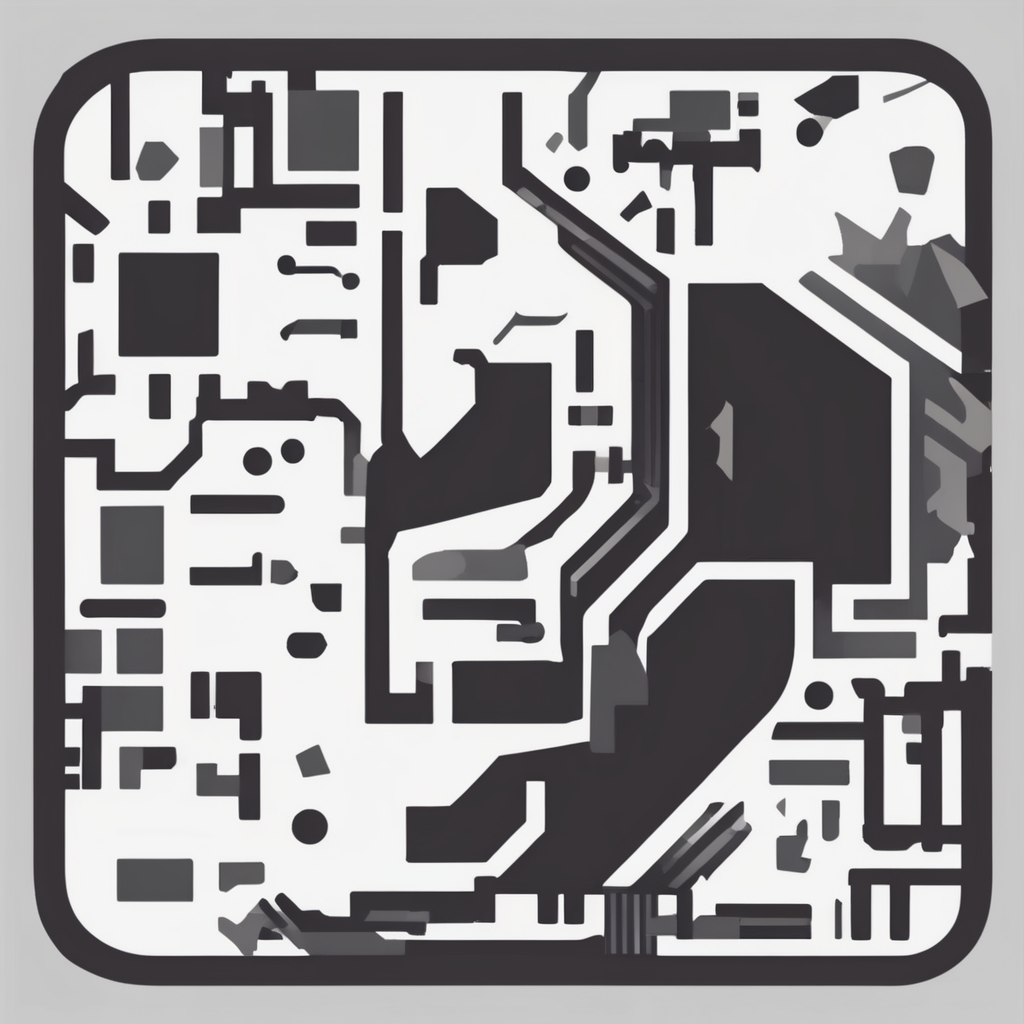Top Strategies for Innovative Solutions in Digital Product Design
In the ever-evolving landscape of digital product design, innovation is key to staying ahead of the competition and meeting the evolving needs of users. Here, we will delve into the top strategies that can help you create innovative and successful digital products.
Understanding User Needs
At the heart of any successful digital product design is a deep understanding of user needs. This involves conducting thorough user research to identify pain points, preferences, and behaviors of your target audience.
Also read : Mastering Secure Single Sign-On: A Comprehensive Guide to Implementing Keycloak
Conducting User Research
User research is essential for creating user-centric designs. Here are some steps to conduct effective user research:
- Surveys and Interviews: Gather qualitative data through surveys, focus groups, and one-on-one interviews to understand user preferences and pain points3.
- User Personas: Create detailed user personas to represent your target audience. This helps in understanding their goals, challenges, and behaviors3.
- Usability Testing: Conduct usability testing to see how users interact with your product in the real world. This provides valuable feedback on the user experience3.
Design Thinking and User-Centric Approach
Design thinking is a human-centered approach that emphasizes empathy, ideation, and prototyping to solve user problems. Here’s how you can incorporate design thinking into your design process:
Have you seen this : Mastering Virtual Machine Management: Leveraging Microsoft Azure DevTest Labs in Your Development Environment
Empathize
Understand the user’s needs and pain points through extensive research.
Define
Define the problem you are trying to solve based on the insights gathered.
Ideate
Generate a wide range of ideas to solve the defined problem.
Prototype
Create prototypes to visualize and test the ideas.
Test
Test the prototypes with real users to gather feedback and iterate3.
Agile Methodology and Cross-Functional Collaboration
Adopting an agile methodology can significantly enhance the innovation process in digital product design. Here’s why:
Agile Methodology
- Iterative Development: Split the development process into sprints to allow for short feedback loops and continuous improvement.
- Adaptability: Be ready to adapt and iterate based on user feedback and changing market conditions1.
Cross-Functional Collaboration
Collaboration between different teams is crucial for fostering innovation. Here’s how to achieve this:
- Interdisciplinary Teams: Ensure that designers, developers, marketers, and stakeholders work together to align goals and communicate effectively.
- Common Understanding: Foster a common understanding of the product vision across all teams to ensure everyone is working towards the same objectives1.
Leveraging Data-Driven Decision Making
Data-driven decision making is vital for creating innovative digital products. Here’s how you can use data to your advantage:
Data Analytics
- Monitor Performance: Use data analytics to monitor product performance and identify user behavior.
- Informed Decisions: Make data-informed decisions about what to develop and market in the future1.
Types of Product Innovation
Understanding the different types of product innovation can help you strategize better. Here are some key types:
Incremental Innovation
- Small Improvements: Make small but meaningful improvements to existing products, such as adding new features or enhancing design2.
Radical Innovation
- Disruptive Changes: Create entirely new markets or reshape existing ones with groundbreaking innovations, like the introduction of the first iPhone2.
Sustaining Innovation
- Refining Products: Refine existing products to maintain or improve their market positioning, such as high-performance car manufacturers enhancing their engines2.
Architectural Innovation
- Rearranging Technologies: Rearrange existing technologies into new structures or configurations, like the shift from desktop PCs to laptops2.
Creating a Product Roadmap
A product roadmap is the blueprint for executing your product innovation strategy. Here’s what it should include:
Define Critical Phases
- Ideation, Prototyping, Testing, Development, and Launch: Clearly define each phase of the product development process2.
Assign Accountability
- Identify Owners: Clearly identify owners for each task and deliverable to ensure accountability2.
Incorporate Feedback Loops
- Regular Check-ins: Build regular check-ins to refine the process based on progress and market feedback2.
Minimum Viable Product (MVP) and Continuous Improvement
Launching a Minimum Viable Product (MVP) can be a strategic move to gather early user feedback and validate assumptions before investing in a full-featured product.
MVP Benefits
- Early Feedback: Gather early user feedback to validate assumptions and make necessary adjustments.
- Reduced Risk: Minimize the risk of investing in a product that may not meet user needs1.
Continuous Improvement
- Monitor Performance: Continuously monitor product performance and gather user feedback.
- Iterate: Iterate the product to meet evolving user needs and improve the user experience1.
Staying Updated on Emerging Technologies
Staying updated on emerging technologies can help you incorporate innovative features into your designs.
Emerging Trends
- Augmented Reality (AR) and Virtual Reality (VR): Incorporate AR and VR to enhance user experiences.
- Voice Interfaces: Use voice interfaces to create more user-friendly and accessible products3.
Prioritizing Accessibility and Inclusivity
Accessibility and inclusivity should not be overlooked in the pursuit of innovation.
Designing for All Users
- Inclusive Design: Design products that are accessible to all users, including those with disabilities or diverse needs.
- User-Friendly Experiences: Create user-friendly experiences that cater to a wide range of users3.
Fostering a Culture of Innovation
Creating a culture of innovation within your organization is essential for driving continuous innovation.
Encourage Creativity
- Share Ideas: Encourage team members to share ideas and experiment with new approaches.
- Challenge the Status Quo: Foster a culture that values creativity and innovation, and encourages challenging the status quo3.
Seeking Inspiration from Diverse Sources
Inspiration can come from unexpected places. Here’s how to seek inspiration:
Diverse Influences
- Art, Literature, Nature: Seek inspiration from art, literature, nature, and other design disciplines.
- Cross-Disciplinary Learning: Expose yourself to a wide range of influences to spark new ideas and approaches3.
Practical Tips for Innovative Product Design
Here are some practical tips to help you come up with innovative product design ideas:
Brainstorm and Research
- Market Research: Conduct thorough market research to understand user needs and competitor strategies.
- Competitor Analysis: Study leading products in the market to identify trends and opportunities for differentiation5.
Focus on Simplicity and Usability
- Simple Designs: Focus on simplicity and usability to create products that are easy to use and meet real-world needs.
- User Feedback: Keep an open dialogue with designers and customers to gather feedback and iterate designs5.
Example of Successful Innovation
Let’s take the example of Tesla, a company that has revolutionized the automotive industry through service innovation.
Tesla’s Over-the-Air Updates
Tesla’s over-the-air software updates keep vehicles updated without the need for a visit to a service center. This type of innovation strengthens customer relationships by delivering ongoing value and enhancing the user experience2.
Creating innovative digital products requires a combination of understanding user needs, adopting agile methodologies, leveraging data-driven decision making, and staying updated on emerging technologies. By fostering a culture of innovation, prioritizing accessibility and inclusivity, and seeking inspiration from diverse sources, you can drive continuous innovation and create successful digital products.
For more insights on crafting innovative solutions, you can visit this resource which provides a comprehensive guide on the subject.
Key Takeaways
- User-Centric Approach: Put the user at the center of the design process through thorough user research and feedback loops.
- Agile Methodology: Adopt an agile approach to adapt and iterate based on user feedback and changing market conditions.
- Data-Driven Decision Making: Use data analytics to monitor product performance and make informed decisions.
- Emerging Technologies: Stay updated on emerging technologies like AR, VR, and voice interfaces to incorporate innovative features.
- Accessibility and Inclusivity: Prioritize accessibility and inclusivity to create user-friendly experiences for all users.
- Culture of Innovation: Foster a culture that values creativity and innovation within your organization.
By following these strategies, you can ensure that your digital products are innovative, user-friendly, and meet the evolving needs of your users.
Detailed Bullet Point List: Steps to Building a Product Innovation Strategy
Here is a detailed list of steps to build a product innovation strategy:
-
Define Clear Objectives:
-
Define clear and measurable objectives for innovative product development.
-
Align these objectives with overarching business goals and ensure they are supported with OKRs2.
-
Understand Market Needs:
-
Conduct market research to uncover unmet needs, pain points, and emerging trends.
-
Use customer surveys, focus groups, and interviews to gather qualitative data, and complement this with quantitative research2.
-
Develop a Roadmap:
-
Create a product roadmap that outlines timelines, resource needs, and key milestones.
-
Choose the right type of roadmap (Outcome-Based, Timeline, Now-Next-Later) to support your innovation efforts2.
-
Assign Accountability:
-
Clearly identify owners for each task and deliverable.
-
Incorporate feedback loops to refine the process based on progress and market feedback2.
-
Iterate and Experiment:
-
Adopt an iterative design approach to quickly identify what works and what doesn’t.
-
Be willing to try new ideas, test different design solutions, and iterate based on user feedback3.
Comprehensive Table: Types of Product Innovation
Here is a comprehensive table comparing different types of product innovation:
| Type of Innovation | Description | Example |
|---|---|---|
| Incremental Innovation | Small but meaningful improvements to existing products | Smartphone manufacturers introducing better cameras or battery life2 |
| Radical Innovation | Creating entirely new markets or reshaping existing ones | Introduction of the first iPhone2 |
| Sustaining Innovation | Refining existing products to maintain or improve market positioning | High-performance car manufacturers enhancing engines and design2 |
| Architectural Innovation | Rearranging existing technologies into new structures or configurations | Shift from traditional desktop PCs to laptops2 |
| Modular Innovation | Significant changes to specific components within a product | Upgrading a smartphone’s processor or introducing a new camera module2 |
| Open Innovation | Leveraging external collaborations, partnerships, or technologies | Companies like Procter & Gamble using external networks to source ideas2 |
| Service Innovation | Enhancing the product experience by introducing new or improved services | Tesla’s over-the-air software updates2 |
By understanding and leveraging these diverse types of product innovation, companies can strategically position themselves for sustained growth and adaptability in dynamic markets.












